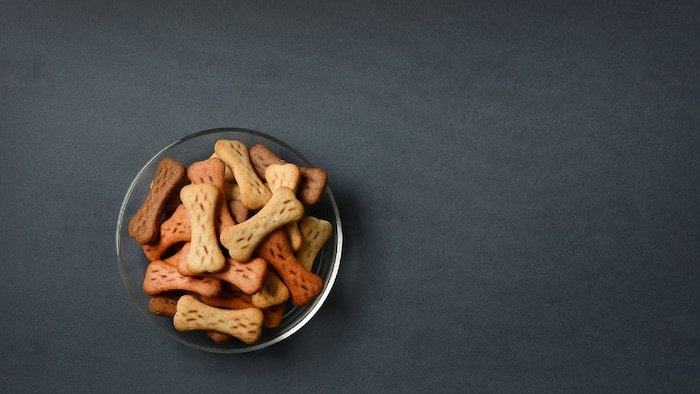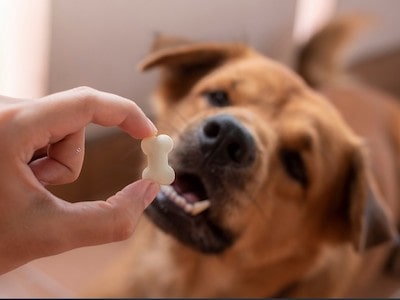Do you have a furry friend that you adore, but sometimes their behavior leaves you scratching your head? Maybe you’ve experienced the confusing phenomenon of finding your dog’s treats buried in unexpected places around your home. You might be thinking, Why on earth would my dog hide her treats?
Well, fear not, because we’ve got you covered! In this article, we’ll be delving into the fascinating world of canine behavior to uncover the reasons why your dog might be hiding her treats.

We’ll explore the instinctual reasons behind this behavior, the signs to look out for, and most importantly, ways to manage or prevent it.
So, whether you’re a seasoned dog owner or a new puppy parent, join us on this journey to understand why our furry friends do the things they do.
Get ready to learn some surprising insights that will deepen your relationship with your beloved pet and make you appreciate their unique personalities even more. Let’s dive in!
Contents
Reasons Why Dogs Hide Their Treats
There are several reasons why dogs hide their treats. While it may seem like a bizarre behavior to us, it is completely normal for dogs and has been observed in their wild ancestors. Here are the three main reasons why dogs hide their treats:

- Instinctual behavior: Hiding food is an instinctual behavior for dogs that goes back to their wild ancestors. In the wild, wolves and other canines had to compete for food and would often bury it to protect it from scavengers and other predators. This behavior is still present in domesticated dogs today, even though they don’t have to compete for their food. Hiding their treats is a way for dogs to protect their food and preserve it for later.
- Resource guarding: Dogs that have a tendency to hide their treats might be exhibiting resource guarding behavior. Resource guarding is when dogs become possessive of their food or other belongings, and might growl, bark, or even become aggressive if someone tries to take their possessions. Hiding treats is a way for dogs to protect their valued resources from being taken by others.
- Anxiety and stress: Dogs that suffer from anxiety or stress may hide their treats as a form of comfort-seeking behavior. Similar to how humans might reach for comfort foods when they’re feeling down, dogs may hide their treats as a way to feel secure and calm during times of stress or anxiety.
- Satiety and food preservation: If your dog has already eaten enough food, she may hide her treats for later. This behavior is a form of food preservation and management, and is particularly common in dogs that have been trained to work or hunt for their food.
- Environmental factors: Environmental factors, such as temperature, light, and humidity, can also influence a dog’s behavior when it comes to hiding their treats. For example, a dog may hide her treats in a cool, dark place to prevent them from spoiling, or in a warm, sunny spot to dry them out.
- Boredom or lack of stimulation: Dogs that are bored or lack stimulation may hide their treats as a way to keep themselves occupied. Hiding their treats provides mental stimulation and a fun activity for dogs to engage in, especially when they don’t have access to other forms of play or exercise.
- Novelty-seeking behavior: Some dogs simply enjoy the act of hiding their treats, and may do it simply because it’s a novel behavior. Dogs are intelligent creatures that enjoy exploring new activities and behaviors, and hiding their treats can be a fun and engaging challenge for them.
Signs That Indicate Your Dog is Hiding Treats
Here are some signs to look out for that may indicate your dog is hiding her treats:
- Disappearing treats: If you notice that your dog’s treats are disappearing or that you can’t find them where you left them, it’s possible that your dog is hiding them.
- Digging behavior: Dogs that hide their treats may exhibit digging behavior, either in the house or outside. If you notice your dog digging in the carpet, on the furniture, or in the yard, it’s possible that she is hiding her treats.
- Secretive behavior: Dogs that are hiding their treats may act secretive or sneaky. They may look around to see if anyone is watching before they bury their treats or hide them in a specific location.
- Unusual chewing behavior: If your dog is spending more time chewing or gnawing on treats than usual, it could be a sign that she is trying to preserve the treat for later.
- Guarding behavior: If your dog becomes possessive or protective of her treats, growling or even snapping at anyone who tries to take them away, it could be a sign that she is hiding her treats to protect them.
- Restless behavior: Dogs that are hiding their treats may become restless or anxious, pacing or wandering around the house or yard as they try to find the perfect hiding spot.
- Smelly or dirty toys: If you notice that your dog’s toys have a strange smell or are covered in dirt or debris, it could be a sign that your dog is hiding her treats in or around the toys.
Ways to Manage or Prevent Hiding Treats Behavior

- Provide your dog with enough treats: Make sure that your dog is getting enough treats and that she is not hiding them because she is not getting enough food. You can schedule regular meals or snacks for your dog to help ensure that she has enough food and does not feel the need to hide her treats.
- Keep an eye on your dog: If you notice that your dog is hiding her treats, make sure to keep an eye on her and discourage her from continuing this behavior. You can distract her with a toy or engage her in a game to take her mind off of hiding treats.
- Provide your dog with appropriate chew toys: Give your dog appropriate chew toys that are designed to be chewed on and will not break apart easily. This will help prevent her from hiding her treats in inappropriate places.
- Use positive reinforcement training: Use positive reinforcement training techniques to teach your dog that hiding treats is not acceptable behavior. Reward her with praise and treats when she behaves appropriately and does not hide her treats.
- Limit your dog’s access to certain areas: If your dog is hiding treats in certain areas of your house or yard, limit her access to those areas or supervise her more closely when she is in those areas.
- Consult with a professional: If your dog’s hiding treats behavior is becoming a problem or is related to other behavioral issues, consult with a professional dog trainer or behaviorist. They can help you identify the underlying causes of the behavior and provide guidance on how to manage or prevent it.
Frequently Asked Questions
Should I be worried if my dog is hiding her treats?
It depends on the frequency and severity of the behavior. If your dog is hiding her treats occasionally and it does not interfere with her eating habits, it is not a cause for concern. However, if it is becoming a problem or if it is related to other behavioral issues, you may want to consult with a professional.
Is it normal for dogs to hide their treats?
Yes, it is normal for dogs to hide their treats, as it is a natural behavior that has been passed down from their wild ancestors.
Can hiding treats lead to health issues for my dog?
Hiding treats itself is not likely to lead to health issues for your dog. However, if your dog is hiding her treats in inappropriate places, such as in furniture or carpet, it can lead to hygiene issues and the potential for bacterial growth. Additionally, if your dog is hiding her treats because she is not getting enough food or nutrition, it can lead to health problems.
Should I punish my dog for hiding her treats?
No, you should not punish your dog for hiding her treats, as it is a natural behavior for dogs. Instead, you can use positive reinforcement training to discourage this behavior and redirect your dog’s attention to appropriate activities.
Conclusion
In conclusion, dogs hiding their treats is a natural behavior that has been passed down from their ancestors. It can be harmless and even entertaining, but if it becomes a problem or is related to other behavioral issues, it is important to take action.
By providing your dog with enough treats, keeping an eye on her, providing her with appropriate chew toys, using positive reinforcement training, limiting her access to certain areas, you can help manage or prevent this behavior and ensure that your dog is getting the proper nutrition and care that she needs.
Remember to be patient and understanding with your furry friend, and enjoy the special bond that you share with your dog.

A retired veterinary technician and full-time dog parent. James knows to serve the community with the best of his knowledge of animal healthcare. He has been working in a known veterinary clinic for quite a few years. He loves reading blogs on pet nutrition and writes unbiased reviews of dog products.


